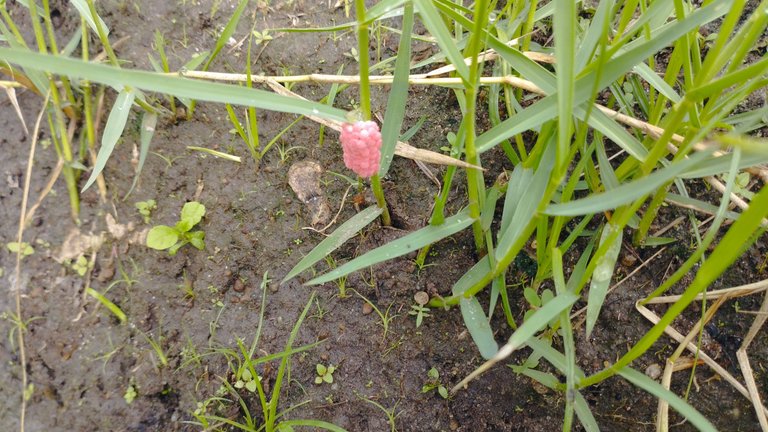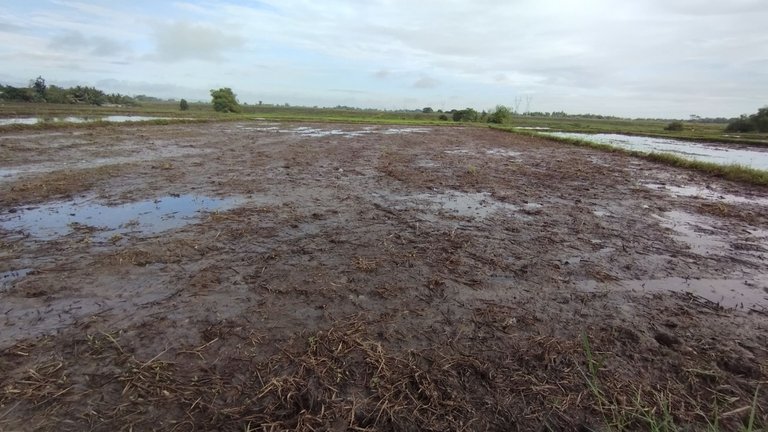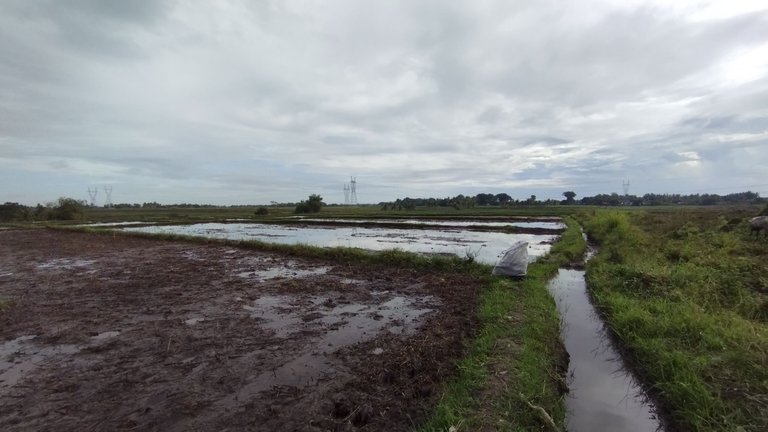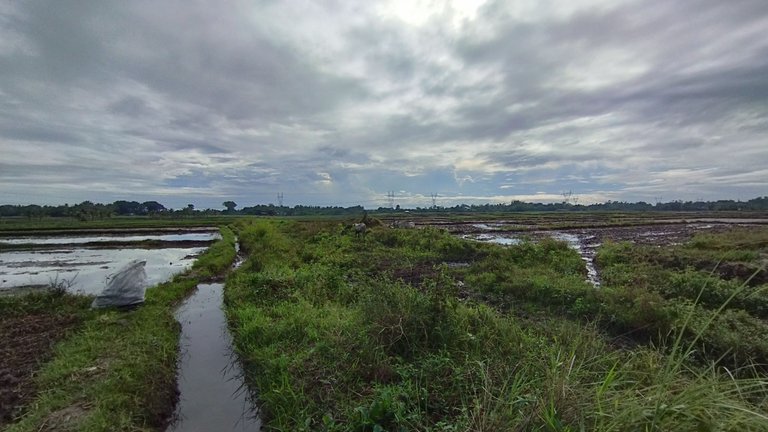The Story Of Golden Kuhol (Pomacea canaliculata) In The Philippines

I once heard my grandfather talking about snails. He said that "when he was young, there was no golden kuhol, there are few, but it's not the same as this day, the size of a terrestrial alien created from somewhere. This was one of the reasons why I was inspired to take my course focused on farming; I learned the basics from him, and now my turning way to understand the things that made me curious one time is all about the snail.
The Kuhol, or the snail in the Philippines, has a history, it's not native, but the first idea is to help the small farmers, not realizing that it harms the plant and people's life. This was the same as the introduction of the frog, which happened now as a major invasive pest in the Philippines. Many things go wrong because of the opening, either accidentally or with its motives.
One of the common was the theory of accidental introduction of janitor fish in the bays in some are of NCR, the other one was the toads, who happened to think that they would help decrease the population of mosquitoes, and now the snails, firstly it was introduced to some farmers with the one goal, to increase the market. Some restaurants demand snails but need to realize this pest's negative effect on farmers' lives. The first idea of helping improve the incomes becomes a damaging loss; for now, it causes more trouble than help.

Some people are curious about where it comes from, they were this slow-walking slug, but they could manifest the whole hectare within no time. I heard some old farmers say maybe it was from the fertilizers they use. I laughed but not in a disrespectful way. The main reason is the canals and waterways, as the eggs were lights and could be transported by the water and sometimes winds; that's why it was hard to eradicate Kuhol.
Farmers today suffer from many problems, including early losses just after planting. The kuhol consumes tiny seedlings directing them from the fresh stems. The risk is that it could consume the whole rice plant overnight, showing blank spots and space in the rice field, so farmers need to acquire a repellant, adding the cost of buying herbicide (weeds), Insecticide (insect pest), and now Molluscicide.
But not only the high price of the chemicals but also the fact that it harms the people who can encounter them every day. Examples are skin diseases, peeling or turning brown of nails, which was a significant problem for the manual laborer, blindness as strong chemicals were accidentally applied and some issues of swelling reproductive organs in a woman who does the fieldwork in a conventional one.



It has already been lost on the farm itself, and I remember my grandpa saying he saw a different kind of kuhol back when he was young. Now he cannot even recognize them, for some of the species of snails native to the Philippines' rice fields have decreased. One of the theories why it happened was that the Kuhol, as the introduced predators, don't were not just eating the plant's greens but also the eggs of the same species. This was one of the terrible results of introducing non-native species. Suffering will be the greatest revenge.
But of course, there were still uses of this kuhol in the farmland, one being food; people in the early days had been eating kuhol or snails as part of their diets. Kuhol was a great source of protein, and snails were popular not just in Asia but worldwide. Expensive restaurants even included snails as a costly taste. But as the days come, I don't recommend eating one, especially since that rice field today was filled with molluscicide and chemicals. But still, it was feed for the ducks. One after the harvest, duck farmers, made a free-range type of pastol, as the ducks feast on the shells and eggs of the kuhol.
Kuhol was only one of many dominating organisms that were mistaken and unplanned introduced. This is why governments worldwide are careful with just one life that wasn't native in the place and introduced with no proper handling of things, and they become a problem.

The good things are a lot of modern farmers are now eyeing the benefits of kuhol as natural fertilizer, feeder and many more. But still a long process of learning.
The new cropping season is why I am not active; lately, I help the farmland, but now I am back to writing tracks.
ALL PHOTOS BELONG TO @eunoia101
 | Hi, eunoia101 is a Farmer, Registered Agriculturist, Agronomist, Farm Technician, Mushroom Cultivator, Entrepreneur, and soon Researcher. Suppose your problems or queries are in any of the fields, don't feel hesitant to comment. We will try to resolve that. Upvote and reblog are highly appreciated. |
|---|
OMG did you ever tried making stew with them or maybe grill that? Indonesian serve it with stew and peanut sauce, maybe once they become a problem, you can cook them 😂
I had tasted the stew with some coconut creamer, also native people here loved to add those Kuhol to dishes, but I will surely eats when I know farmers dont use pesticide in the field, lol. Fishpond also infected with Kuhol thou, so I might have try to experiment cooking soon haha, thank you Mac.
Oh, never thought kuhol was not a native of the country. Ugh, I am not a fan of escargot or any snail food. When I was a kid, I thought those pink eggs were berries. Hehe.
Haha now I am curious if once you tasted the berries? lol me too not fond of eating one, but maybe will try if I personally knew the one who prepares and cook haha.
It reminds me of my childhood days, my father is a farmer so everytime he work at a rice field he always bring us together with a container and we collect this kuhol and and store for 1-2 days then boil it before it get fried .. but exactly when the production of it is out of control it's the number 1 headache of farmers.
Same with my grandfather, as the he will go home, I remembered when I was young I loved to collect a shell of Kuhol especially the huge size one haha, I prefer the other snails like the long shell tail and the small version thatwas black in color uwu.
Yeah, it was also . Especially when it was boiled with some lemongrass
Woahh, I miss it.
That alien species are really troublesome to us farmers. I've encountered them very often and when I see their eggs on the side of the rice field I will squash them. Every single one of those pink things.
One of the snails that's been edible here in the province is the one we called Liddeg, a type of snail that are not harmful to the rice. But these edible snails was put to extinction as of today in our area due to the different chemicals applied in the farms. It's just really sad because I experienced picking them up, cooking them and eating them before but now I can't see a single one.
Those destructive pests are the only one left here.
Oww I am guilty of this, when I was young I hunt down eggs and crashed them as the color comes from the berries as jiji said haha. I knew the "Liddeg" also the "kuskusil-ling" is the one that I loved, well the planting season began so expecting the Kusil-ling will comes in somewhere.
I recommend further readngs on the Global Advances in Ecology and Management of Golden Apple Snails book. By far the ultimate guide on the history and management of Golden Kuhol.
Based on my Lolo, DA gave the GAS to the farmers as alternative protein source by raising it during off-seasons of rice. Farmers create ponds in their rice paddies and surround it with nets, even guarding it for potential thefts. GAS had proven itself invasive when it endlessly ballooning in population and started destroying rice during planting seasons.
Major pesticide companies started advertising highly toxic chemicals to combat GAS but is only temporarily effective. The chemical products had forever destroyed the flora and fauna that co-existed with (or probably predated) the rice in the fields, such as native eels, mud fish, catfish, crabs, freshwater shrimp, and other freshwater animals commonly found or harvested in the wet rice fields.
Even today, GAS continue to reproduce in natural and artificial canals and waterways without readily available predator or parasite to control its population naturally. Our temporary solution is timed flooding and manual collection of GAS while repurposing it in sun-dried form as fertilizer.
Wow thank you so much, I might have to read more about the GAS, I also interested to the idea that GAS as bnificial one, I read a latest article about GAS been using as control to rice bus or the atangya, also will try to collect and made some amino acid for as my fertilizers.